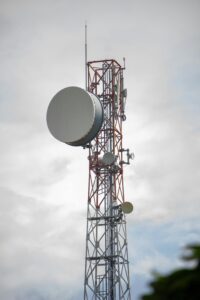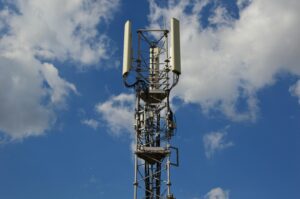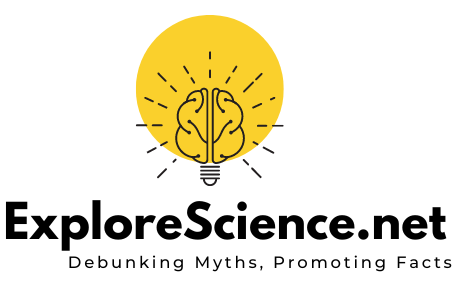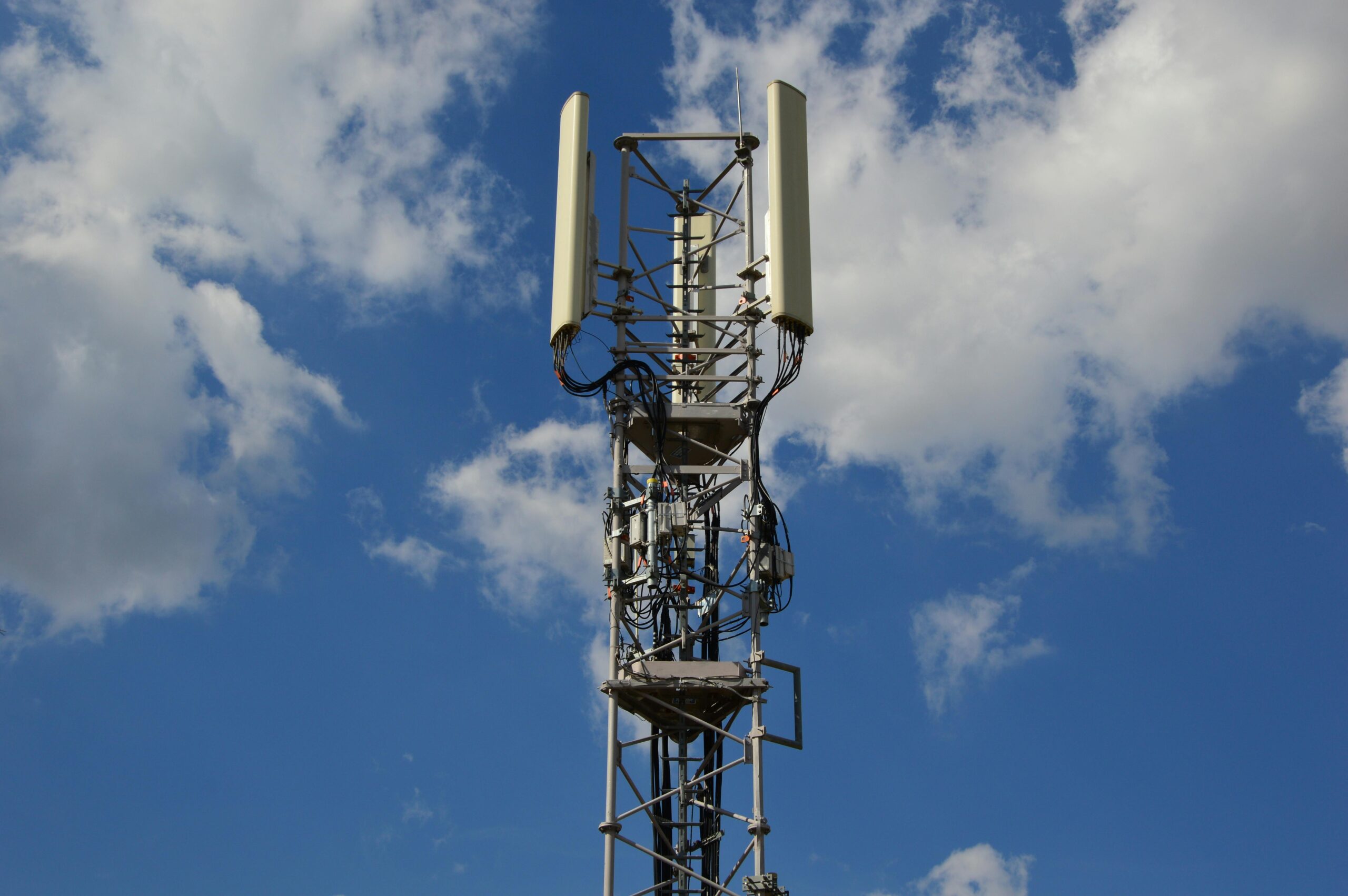The introduction of 5G technology has spurred discussions and worries about its possible effects on human health in recent years. The radiation that 5G towers release and its possible hazard to humans are among the main worries. But comprehending the subtleties of this matter necessitates a deeper examination of academic studies and professional perspectives.
First and foremost, it’s critical to distinguish between radiation that is ionising and non-ionizing. Ionising radiation, which includes gamma and X-rays, has the energy to break free electrons from atoms that are securely linked, which could harm cells and raise the risk of cancer. However, non-ionizing radiation, which includes radiofrequency radiation from 5G towers, is typically seen as less dangerous because it does not have the energy to ionise atoms.
Several research have looked into the consequences of radiofrequency radiation exposure on health, particularly the radiation that 5G towers release. Reputable scientific bodies, such as the International Commission on Non-Ionizing Radiation Protection (ICNIRP) and the World Health Organization (WHO), agree that there is currently insufficient data to draw a definitive conclusion about the negative health effects of radiofrequency radiation exposure from 5G towers on people.
Moreover, safety rules and recommendations have been set by regulatory organizations in several nations to reduce the amount of radiofrequency radiation that people are exposed to. These guidelines are designed to guarantee that exposure levels stay substantially below the point at which harmful health effects could materialize. They are founded on thorough evaluations of the scientific literature.
The short-wavelength UV light from the sky has enough energy to remove electrons from atoms, causing damage to skin cells and DNA, ionizing radiation is the reason we wear sunscreen outside. Conversely, millimeter waves have longer wavelengths and insufficient energy to directly harm cells, making them non-ionizing.Having spent almost 50 years researching the health consequences of radio waves, Fosateer stated that “the only established hazard of non-ionizing radiation is too much heating. When a person is exposed to non ionizing radiations with High frequency for a prolonged period of time the may become dangerous and may cause the heath related issues.
Taking into account the physics of radiofrequency radiation is also very important. Non-ionizing radiation, such as that from 5G towers, is mostly absorbed by the skin and does not penetrate deeply into the body, in contrast to ionizing radiation, which can enter deep into tissues and cause cellular damage. Furthermore, radiofrequency radiation intensity rapidly diminishes with increasing distance from the source, hence reducing possible exposure levels.Nonetheless, some people and organizations continue to have doubts regarding the security of 5G technology in spite of the available studies and safety precautions. Rather than being supported by empirical data, disinformation and anecdotal tales frequently increase concerns.
What is 5g technology
The fifth generation of cellular networks, or 5G, replaced the 4G (LTE/WiMAX), 3G (UMTS), and 2G (GSM) networks. Compared to its predecessors, it offers a number of noteworthy improvements, including improved connectivity, lower latency, greater capacity, and faster data rates for a variety of devices and applications.The main features of 5G technology are as follows:
Increased Data speed l: In comparison to earlier generations, 5G is expected to offer much higher data speed . In contrast to 4G LTE networks, which normally provide rates in the tens to hundreds of megabits per second (Mbps), 5G networks are designed to deliver speeds of multiple gigabits per second (Gbps), which will allow users to upload and download data significantly faster.
Reduced Latency: The term “latency” describes the amount of time data takes to move from one location to another and back. The goal of 5G technology is to cut down on latency from the tens of milliseconds that 4G networks usually cause to a few milliseconds. For real-time applications like virtual reality, online gaming, and driverless cars, this low latency is essential.
Enhanced Capacity: In comparison to earlier generations, 5G networks can accommodate a noticeably higher number of connected devices per unit area. The present digital landscape is characterized by an increasing number of smart sensors, Internet of Things (IoT) devices, and other connected gadgets, which requires this additional capacity to support them.
Spectrum Flexibility: 5G technology makes use of a wider range of frequencies, encompassing both millimeter wave and lower frequency bands (sub-6 GHz). Higher frequency bands enable faster data speeds but have a shorter range and are more prone to obstruction than lower frequency bands, which allow better penetration through barriers and coverage.
Network Slicing: This new idea brought forth by 5G networks enables network operators to set up several virtual networks inside of a single physical network architecture. The requirements of various applications and services may be tailored to each network slice, guaranteeing the best possible performance, security, and resource allocation.
Massive Multiple Input Multiple Output (MIMO) and Beamforming: 5G networks use these cutting-edge antenna technologies to boost spectral efficiency, improve coverage, and strengthen signals. Particularly in highly populated locations, these strategies allow 5G networks to give better dependability and faster data speeds.
Edge Computing: 5G networks enable edge computing, which brings computer power closer to gadgets and end users. Applications that are sensitive to latency might increase response times and decrease dependency on centralized data centers by processing data locally at the network edge.
Comparing 5G technology to earlier cellular network generations, there are a number of benefits, such as:Greater Data rates: Compared to 4G LTE networks, 5G networks offer far higher data rates. Users may download and upload data much more swiftly with multi-gigabit-per-second (Gbps) rates, allowing for seamless streaming, quicker downloads, and better browsing experiences overall.
Server support: The time it takes for data to go from its source to its destination and return is decreased with 5G technology. 5G networks provide real-time communication and support latency-sensitive applications like virtual reality, online gaming, and driverless cars, with latency reduced to mere milliseconds.
Connectivity: 5G technology enhances connectivity in metropolitan settings and densely populated locations where network congestion is a typical occurrence. Even in demanding situations with high user density, 5G networks provide improved coverage and dependability thanks to more effective spectrum utilization and cutting-edge antenna technologies.
Emerging Technologies: 5G networks offer the infrastructure required to facilitate the development of new applications and technologies, such as the Internet of Things (IoT), augmented reality (AR), virtual reality (VR), and artificial intelligence (AI). For these technologies to provide immersive experiences and real-time insights, high-speed, low-latency connections are necessary.
Economic Growth and Innovation: It is anticipated that the extensive use of 5G technology would spur innovation and growth in a number of industries. 5G networks have the ability to open up new revenue streams and provide opportunities for companies, entrepreneurs, and developers by enabling new services, business models, and applications.
Edge Computing Capabilities: By bringing computing resources closer to end users and devices, 5G networks enable edge computing. Latency-sensitive applications can achieve faster reaction times and less reliance on centralized data centers by processing data locally at the network edge, opening up new use cases and efficiency.All things considered, 5G technology is a major advancement in wireless communication, with the potential to change entire industries, enhance people’s quality of life, and spur creativity in the digital age.
Harmful radiations
Are 5G radiations harmful to Humans and Animals 
Radiations that can harm humans and other living things are generally referred to as harmful radiations.
There are two main types of hazardous radiation:
Ionizing Radiation: Ionizing radiation has sufficient energy to remove electrons from atoms and molecules, ionizing them. This procedure has the ability to break chemical bonds and harm DNA and other biological components. X-rays, gamma rays, and some particles released during radioactive decay, such as alpha and beta particles, are examples of ionizing radiation. Long-term ionizing radiation exposure raises the risk of genetic alterations, cancer, and other illnesses.
UV radiation is emitted by artificial sources like tanning beds and the sun. It is a component of the electromagnetic spectrum. Despite not being ionizing, UV radiation can nonetheless be harmful to living things. It is well recognized that UV radiation damages skin, accelerates the aging process, and raises the risk of skin cancer, including melanoma.The potential health concerns associated with these dangerous radiation types can vary depending on factors such exposure length, intensity, and individual sensitivity. It’s critical to take preventative measures to reduce exposure to dangerous radiation, such as wearing protective gear (such as lead aprons for X-rays), avoiding the sun during UV peak hours, and adhering to safety regulations in radiation-prone areas.
Conclusion
The introduction of 5G technology has raised concerns about its potential health effects, particularly regarding the radiation it releases. It’s crucial to differentiate between ionising and non-ionizing radiation. Ionising radiation, like gamma and X-rays, can harm cells and increase cancer risk, while non-ionizing radiation, like 5G tower radiofrequency, is generally considered less dangerous.

